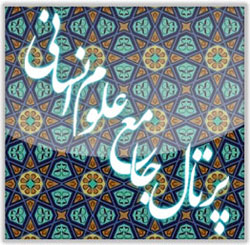Reading the Motifs of Achaemenid Architectural Works Based on Jung's Archetype Theory
Keywords:
Achaemenid Architecture, Collective Unconscious, Archetype, Carl Gustav JungAbstract
Architecture constitutes a prominent aspect of Iran’s art history, consistently attracting attention and admiration through the ages. Among its numerous periods, Achaemenid architecture stands out as one of the most illustrious epochs in Iranian architectural heritage. This architecture is adorned with remarkable motifs and visual representations that, upon reflection, offer a deeper understanding of the spirit of art and architecture of that era. It appears that the motifs and designs in Achaemenid architecture, beyond their external ornamental function, encompass deeper meanings and symbolic content intricately connected to the human psyche. The present study aims to decode these motifs through a psychoanalytical approach based on the theories of Swiss psychologist Carl Gustav Jung. According to Jung, the human psyche comprises three levels, the deepest of which is the collective unconscious. He termed the contents of the collective unconscious “archetypes,” which manifest symbolically in literary and artistic works. Jung conducted extensive research on symbols and believed that virtually anything in the world could acquire symbolic meaning. This research endeavors to explore the manifestation of archetypes, as proposed by Jung, in the symbolic motifs of Achaemenid architectural art. It seeks to answer the central question: how can the influence of the collective unconscious in Achaemenid architectural motifs be explained, and in what ways are archetypes reflected in these works? The methodology of this study is comparative-analytical, and the data collected are qualitative in nature, derived from documentary and library sources. The findings suggest that Achaemenid architectural motifs, beyond their decorative aspect, possess symbolic significance rooted in archetypes and the collective unconscious. These symbols are reflected in architectural elements through abstract and composite forms of animals, plants, sacred numbers, and shapes.
Downloads
Published
Submitted
Revised
Accepted
Issue
Section
License
Copyright (c) 2025 پریسا شاه وردی (نویسنده)

This work is licensed under a Creative Commons Attribution-NonCommercial 4.0 International License.









